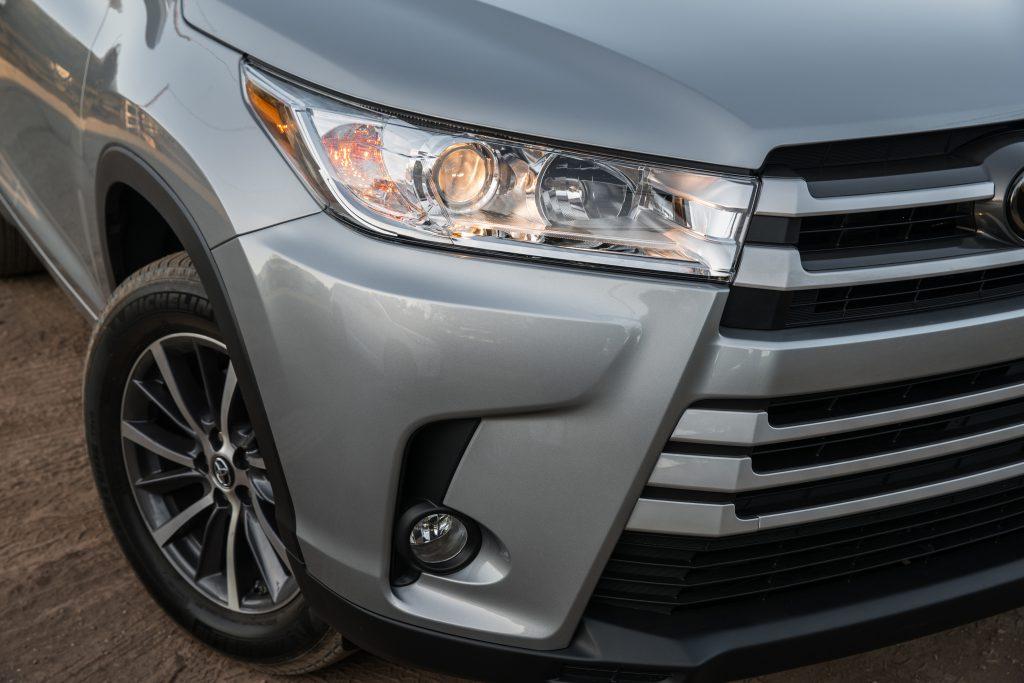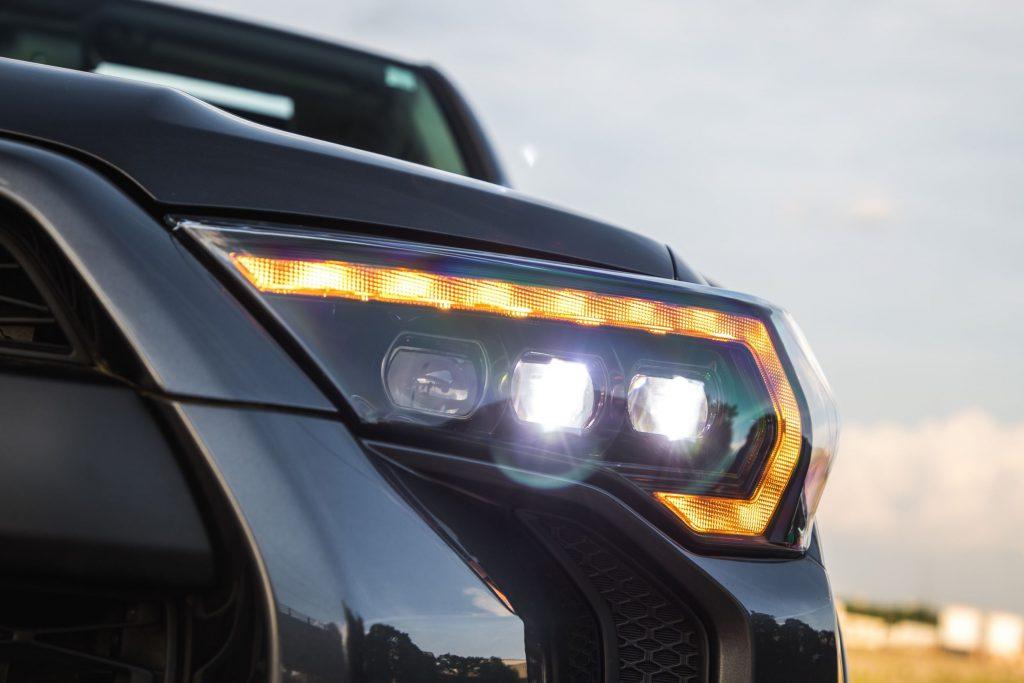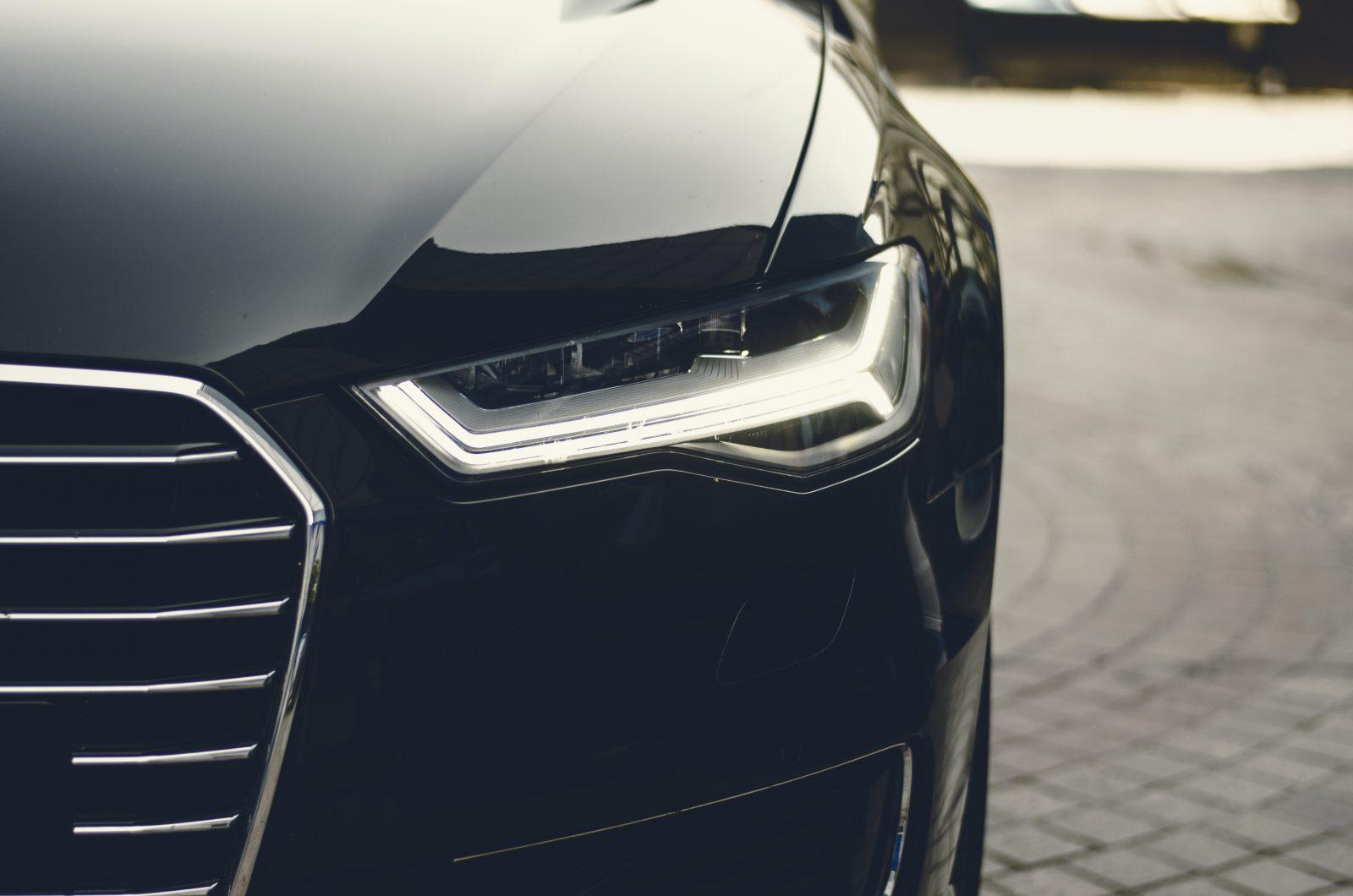It’s common knowledge that LED light bulbs are very efficient to use in your home, but what about your car’s headlights? What kind of headlight is best for driving, LED or halogen? A comparison of LED vs Halogen headlights in different aspects will reveal “are LED headlights better?”.

Find out which is more efficient for your vehicle, LED vs Halogen headlights, to choose the one that suits your needs. To learn more useful facts and be well in-tune with your car, refer to our handy DIY maintenance tips.
Contents
LED vs Halogen headlights – A Full Comparison
Light bulbs basics
To get a full grasp of the comparison between LED vs Halogen headlights, you should understand the characteristics or metrics of light bulbs. The basic metrics in choosing light bulbs include its brightness, how hot it gets, and how efficient it is, that is the ability to emit light relative to the amount of energy it consumes.
A bulb’s ratio of the amount of power emitted as light relative to its energy consumption is called its luminous efficiency.This metric is measured in lumens per watt (lm/W).
Read more:
What are halogen headlights?
Halogen headlights are by far the most common. This type of headlights can be found in at least 80% of cars on the road today.
When it is this common, you can guess that they are the easiest and cheap to make, and this is true for halogen lights.
Halogen lights are very much like traditional incandescent lights, which work by heating up a filament. A filament is a tiny, slender thread or wire made of materials that have very high melting point.
Halogen bulbs draw electrical power from the source, run it through a filament, which heats up to such a high temperature and thereby illuminates. The difference between the traditional incandescent lights and halogen lights is that the latter uses halogen gas that allows the filament to glow brighter than in the normal-air environment.
Just like traditional incandescent lights, halogen light bulbs are very hot to the touch, since a large amount of energy is emitted as heat, meaning low lighting efficiency.
In fact, halogen light bulbs have a luminous efficiency of only 2% – 4%, meaning they produce a small amount of light while consuming a lot of electricity.
However, halogen light bulbs are indeed easy and cheap to manufacture, thanks to its simplicity: if the bulbs don’t work, it’s only because the filament is damaged.

Advantages:
- Having strong light intensity, and the ability to illuminate up to 20m away, helping the driver see better than with conventional lights.
- Halogen headlights do not cause glare, ensuring safety when driving
- Glowing for 10,000 hours. The light structure is made from high-quality materials that can prevent ultraviolet rays and not cause yellowing of the lamp surface, so the average lifespan of Halogen headlight bulbs is quite high, from 1.5 to 2 years.
- With a simple structure, the price of Halogen lights is cheap and easy to buy.
Read more
Disadvantages:
- Because the lamp uses incandescent lamps, it easily generates high heat, affecting lighting efficiency, and heating the surrounding air, creating an uncomfortable feeling.
- Difficulty in maintenance when there are not many alternative colors.
- The headlight is easily damaged when mixed with a small amount of moisture and may need to be completely replaced.

Are LED headlights better?
LED is short for “light-emitting diodes”. Are LED headlights better in the metrics we mentioned? Firstly, LED bulbs produce light that’s more natural looking.
In LED bulbs, electrical energy runs through a small semiconductor called a diode, which warms up and emits light, hence the name. LED headlights do emit some energy as heat, however it’s nowhere near halogen headlights. In addition, extra heat sinks and fans help keep the diode cool. Thanks to this lower heating, its lifespan is much longer.
Another advantage of LED lights is their small size, helping them to be designed in any shape, and suitable for many vehicle designs. This helps manufacturers easily design the front of the car to become more attractive.

In short, LED is a much more efficient lighting source. In fact, its luminous efficiency ranges between 40 to 50%.
Another way to compare is that LED headlights typically produce almost 3 times the amount of light while consuming about a third of the amount of electricity compared to its halogen counterpart.
For all of these advantages, you need to pay more for LED headlights for sure. While halogen headlights would cost around $30 per unit, you’ll have to pay at least 5 to 10 times this amount to get LED units, sometimes a lot more. However, if your car is not damaged in accidents, you may never, ever have to replace your LED headlamps at all. They can last for up to 20,000 hours, that is 20 times the lifespan of a halogen unit.
Read more
However, the disadvantage of this headlight is that although LED bulbs do not emit heat when turned on, unlike Halogen bulbs, they generate a certain amount of heat at the bottom of the emitter, when current passes through, which is dangerous. for adjacent assemblies and cables. This is also the reason why LED lights need to be connected to the cooling system, which makes installing LED lights on cars more expensive.
In short, the more bulky, more expensive LED headlights are better than its halogen counterparts in the performance metrics. However, in the real world, many drivers and car lovers do not deem LED’s advantages important.
In its annual car evaluations, Consumer Reports, an independent nonprofit organization, called LED headlights “a technology that shows little benefit in our tests.”
Bonus
Xenon high-intensity discharge (HID) headlamps
In the LED vs Halogen headlights comparison, LED seems to win by a mile. If you’ve heard of the HID, the most recent invention, you would wonder how the HID lighting source compare when used as a car’s headlamps.
HIDs work by sending an electrical discharge between two electrodes and through an ionized gas.
In terms of appearance, HID might be the coolest. HID headlamps are arc lamps, like neon sign, thus they can be bent and arranged in cool looking shapes.
Compared to LED headlights, HID headlights still have a shorter lifespan. Its light output is also excellent, however while LEDs produce light instantly, HIDs take a few seconds to get to full brightness and color.
Watch more:
LED vs Halogen headlights – The verdict
In short, LED headlights are better than their halogen counterparts in many metrics while being more expensive and bigger. If you value these benefits, you can opt for LED headlights.
While LED headlamps cost about 5 to 10 times the price of halogen headlamps, it is well worth the money, especially using LED units can save you time and money have them replaced.
LED light is more natural looking. While LED headlights can last for up to 20,000 hours, a typical halogen headlight only last up to 1,000 hours. Efficiency-wise, halogen light bulbs have a luminous efficiency of only 2% – 4%, while the range for LED is between 40 to 50%.

Who knows there are so many things to consider when it comes to even a small part on your car like the headlamps? For more interesting and super useful automotive facts, visit our comprehensive A-Z library and car comparisons.



